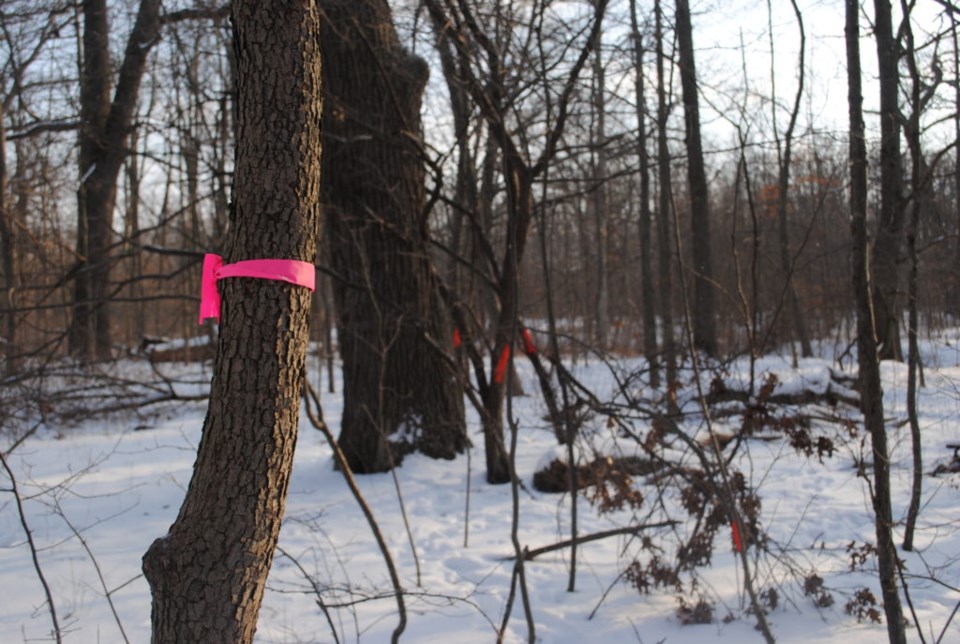
Ribbons and paint were used to mark at-risk native trees and their threats, non-native trees, in the Paradise Grove forest. (Lauren O’Malley)
Niagara-on-the-Lake is known for its robust and lush forests — many of which are on government land, and thus in the dedicated hands of Parks Canada.
The federal agency recently gathered a team of experts and brought them to town, to begin a conversation — about trees.
They came to the right place, according to Ken Kingdon, a resource conservation manager at Parks. “It was such a positive experience. It made me want to come back and engage with the community again.” Kingdon describes a very receptive and engaged group of nature buffs, eager to give and receive information about the landscape around them.
This visit was specifically designed around discussion of the protection of flora and fauna species at risk. Parks has recently launched a multi-species action plan for Niagara National Historic Sites of Canada, which includes the Commons, Fort George, Paradise Grove, and Niagara Shores park on Lakeshore Avenue.
Some recommendations include thinning the trees in Paradise Grove, removing non-native species and allowing the endangered native ones — like Butternut and Eastern Flowering Dogwood — to thrive.
If you’re walking in Paradise Grove, you might see some fluorescent tape and paint on a cluster of trees. This handiwork was done by Mary Gartshore, an ecosystem restorationist, to indicate native and non-native species. She flagged them appropriately, and then recommended a management strategy, which includes the removal of the invasive trees.
But Kingdon calmly states, “At this point in time it’s not imminent. They’re just identified as non-native. They’re small trees, still in their growth stage.” It will be years before action is taken in the forest (other than dealing with hazardous trees, “for example dead trees adjacent to trails”) — and those years will feature a great deal of dialogue between Parks Canada and the community. “There will be no chainsaws anytime soon,” he says.
Kingdon is excited about the citizen science: collective sharing of information regarding natural life on these sites. “This is really a good news story,” he says. Parks Canada was not aware there was an Eastern Flowering Dogwood in the area until a community member pointed it out. Local Dan Andrews contacted Parks and told them of the species at risk thriving in the forest. “He also brought up that it was being encroached upon and needed management,” says Kingdon.
Kingdon says they are aware some thinning will need to be done, but he’s quick to clarify that protection, preservation, and maintenance are the primary goals of the species at risk action plan.
“We need to do more homework before we commit to any actions,” he says. “Not only will we communicate — we need to come up with a restoration plan and need to know from the community what kind of plant restoration is desired.”
The next step is to share the collected observations, suggestions and ideas with the citizens of NOTL, and create a dialogue between them and Parks Canada to determine ideal next steps. “We are committed to communicating with the community regarding any action planned,” says Kingdon. “No action is imminent — we need to do more homework before we commit to any actions.”
The plan is available online by searching “multi-species action plan” at canada.ca. Questions and comments can be directed to [email protected].